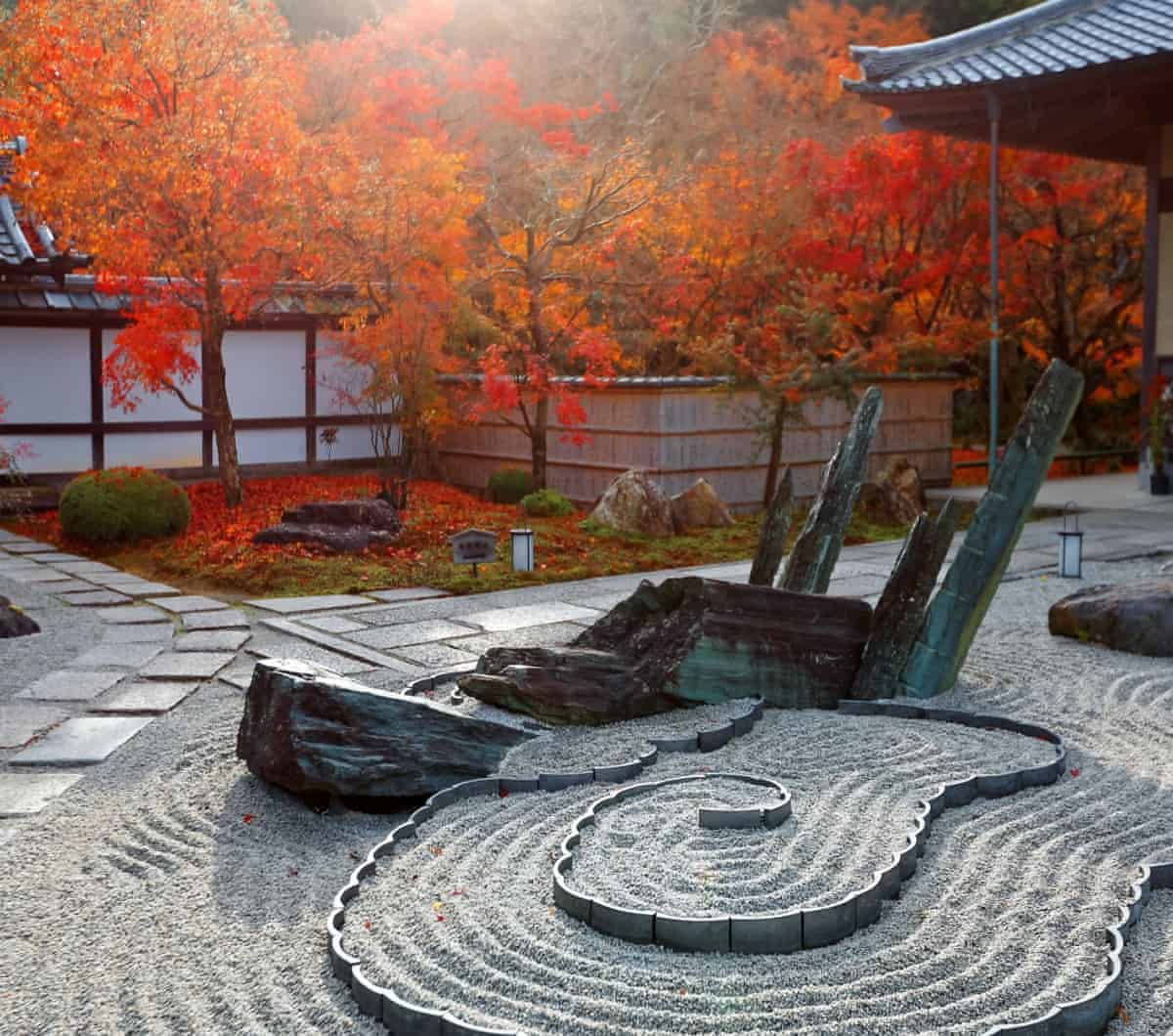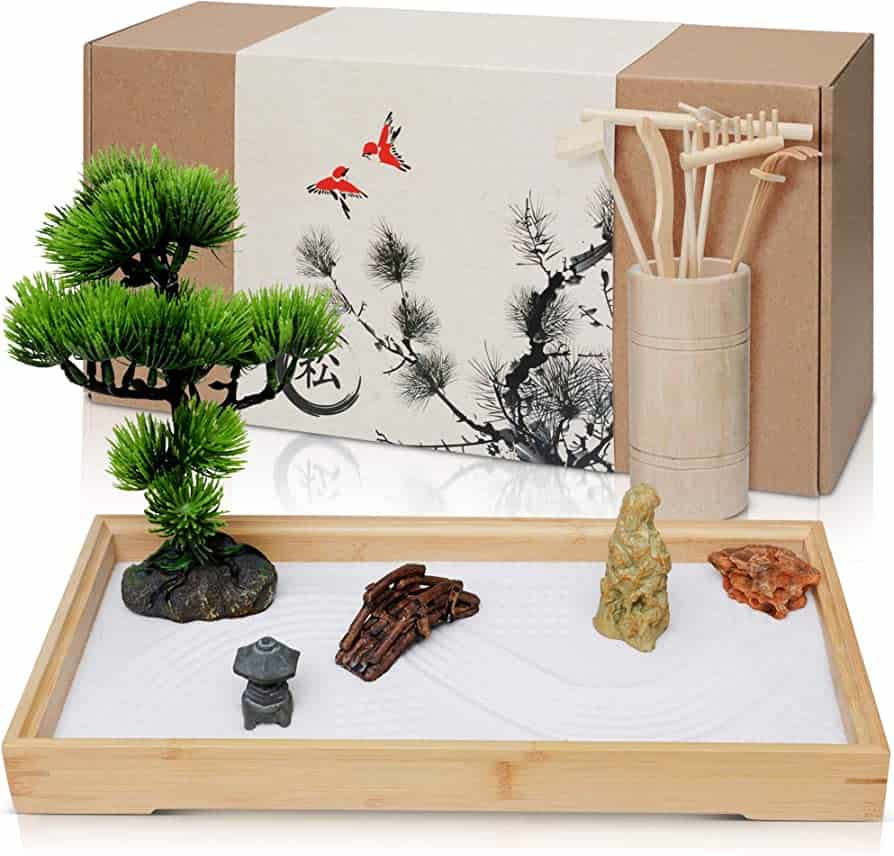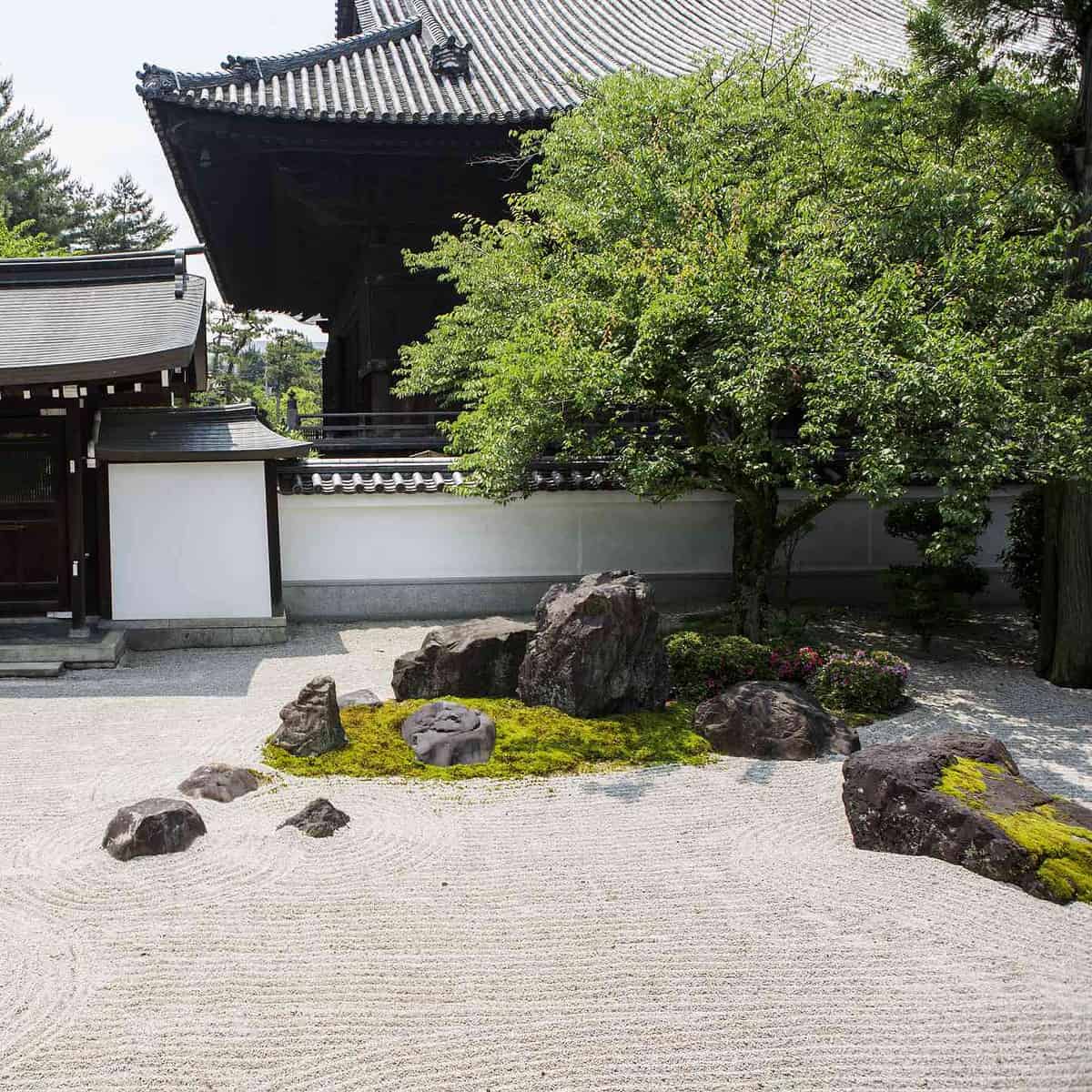Welcome to the serene world of Zen gardens, where nature’s beauty and mindful design harmonize to create a tranquil oasis. If you’re seeking a slice of peace and serenity amidst the chaos of everyday life, look no further than the captivating allure of Zen gardens.
In this article, we’ll explore the essence of Zen gardens, their history, elements, and how to create your own personal Zen retreat. So, grab a cup of tea, take a deep breath, and let’s embark on a journey of tranquility and inner calm.
The Increasing Popularity of Zen Gardens:
The popularity of Zen gardens has grown steadily over the years, as more people seek respite from the fast-paced and chaotic nature of modern life. These serene and contemplative spaces have captivated individuals around the world, attracting both garden enthusiasts and those interested in mindfulness and tranquility.
Let’s explore the factors that have contributed to the rising popularity:
- Stress Relief and Relaxation: Zen gardens provide a peaceful and calming environment, allowing individuals to escape the stresses and pressures of daily life. The act of raking the gravel or sand, tending to the garden, and simply being present in the serene surroundings can promote relaxation, reduce anxiety, and restore a sense of balance.
- Mindfulness and Meditation: They are closely associated with the practice of mindfulness and meditation. The simple yet deliberate actions of raking the gravel or sand and focusing on the present moment help individuals cultivate a state of mindfulness, bringing awareness to their thoughts, sensations, and surroundings. The meditative nature of Zen gardens appeals to those seeking to deepen their mindfulness practice or find moments of stillness amidst the busyness of life.
- Aesthetic Appeal: They are visually striking, with their clean lines, carefully arranged rocks, and meticulously raked patterns in the gravel or sand. The minimalist design and harmonious composition evoke a sense of beauty, tranquility, and balance. Many people are drawn to the aesthetic appeal of Zen gardens, appreciating their simplicity and the way they blend seamlessly with nature.
- Connection with Nature: In an increasingly urbanized world, they offer a connection with the natural world. The elements used in Zen gardens, such as rocks, gravel, and moss, mirror the beauty and harmony found in nature. These gardens provide an opportunity to create a small piece of nature within one’s own living space, fostering a sense of grounding and connection with the environment.
- Personal Retreat Spaces: Zen gardens can serve as personal retreat spaces, where individuals can find solace, introspection, and a break from the outside world. They offer a designated area for quiet reflection, meditation, or simply enjoying a moment of tranquility. As people seek ways to create a sense of sanctuary within their homes, Zen gardens provide a dedicated space for self-care and inner exploration.
- Cultural Fascination: Zen gardens have a rich history deeply rooted in Japanese culture. This cultural connection has sparked curiosity and fascination among people worldwide. As interest in Japanese aesthetics, philosophy, and mindfulness practices grows, they have gained popularity as a way to immerse oneself in Japanese traditions and experience their calming influence.

It is through these factors, among others, that the popularity of Zen gardens has flourished. As individuals seek balance, peace, and a deeper connection with themselves and the natural world, these tranquil spaces continue to enchant and provide a much-needed respite from the demands of modern life.
The Essence of Zen Gardens:
Zen gardens, also known as Japanese rock gardens or dry gardens, are reflections of Zen Buddhism’s principles of simplicity, mindfulness, and harmony with nature.
These meticulously designed spaces evoke a sense of peacefulness and serenity through the careful arrangement of rocks, gravel, sand, and minimalist vegetation. The essence of Zen gardens lies in their ability to invite contemplation, stillness, and a deep connection with nature.
The History:
Zen gardens trace their roots back to medieval Japan, where they were originally created within Buddhist temples as spaces for meditation and reflection. The first Zen gardens were inspired by the natural landscape and sought to replicate its essence in a smaller, stylized form.
Over time, they evolved into symbols of spiritual and aesthetic pursuits, captivating people with their beauty and tranquility.
Elements of Zen Gardens:
To truly understand Zen gardens, let’s explore the key elements that make them so captivating:
- Rocks: Rocks hold great significance in Zen gardens, representing mountains or islands in a vast sea. They are carefully placed to create a sense of balance, harmony, and the illusion of a larger landscape.
- Gravel or Sand: Gravel or sand serves as the “ocean” in Zen gardens, raked in patterns that resemble waves or rippling water. The act of raking the gravel is a form of meditation, calming the mind and promoting mindfulness.
- Moss and Plants: While Zen gardens are primarily minimalist, they often include carefully chosen moss or small plants to add a touch of greenery and organic texture. These plants are selected for their ability to thrive in a serene, low-maintenance environment.
- Bridges and Pathways: In larger Zen gardens, stone bridges and pathways are incorporated to guide visitors through the space. These paths encourage a slow, contemplative stroll, enhancing the meditative experience.

Creating Your Own Zen Garden:
You don’t have to be a Zen master to create your own Zen garden. Here are some steps to get you started:
- Choose a Space: Select an area in your backyard, patio, or even indoors where you can create your Zen garden. It can be as small or as large as you desire.
- Plan the Design: Visualize how you want your Zen garden to look and feel. Consider the placement of rocks, the pattern of gravel or sand, and any additional elements you’d like to incorporate.
- Prepare the Ground: Clear the area and level the ground. You may want to lay a weed barrier before adding gravel or sand to ensure easy maintenance.
- Add the Elements: Begin by placing rocks strategically, focusing on creating balance and visual interest. Then, carefully spread the gravel or sand, using a rake to create patterns or waves.
- Optional Additions: If space permits, consider adding moss, small plants, or a simple stone bridge to enhance the aesthetic appeal and tranquility of your Zen garden.
- Maintain Mindfully: Regularly tend to your Zen garden, raking the gravel or sand to maintain the meditative patterns. Trim any plants and remove debris to keep the space clean and serene.

Conclusion:
Zen gardens offer a sanctuary where the mind can find solace and the soul can connect with nature’s serenity. By incorporating the principles of simplicity, balance, and mindfulness, these gardens transport us to a realm of tranquility and inner peace.
Whether you create a small Zen garden in a corner of your backyard or design an expansive retreat, the essence remains the same – an invitation to slow down, breathe deeply, and embrace the beauty of simplicity. So, go ahead, unleash your creativity, and let a Zen garden become your sanctuary of serenity.
Originally posted 2023-04-04 21:20:19.


Hi there would you mind stating which blog
platform you’re working with? I’m looking to start my own blog in the near future but I’m having a difficult time choosing between BlogEngine/Wordpress/B2evolution and Drupal.
The reason I ask is because your layout seems different then most
blogs and I’m looking for something unique.
P.S My apologies for getting off-topic but I had to ask!
@Pagamento: This blog is developed on WordPress with a default starter theme (Twenty Three). We are going to add a bit of design in coming weeks. No worries, thanks for asking!